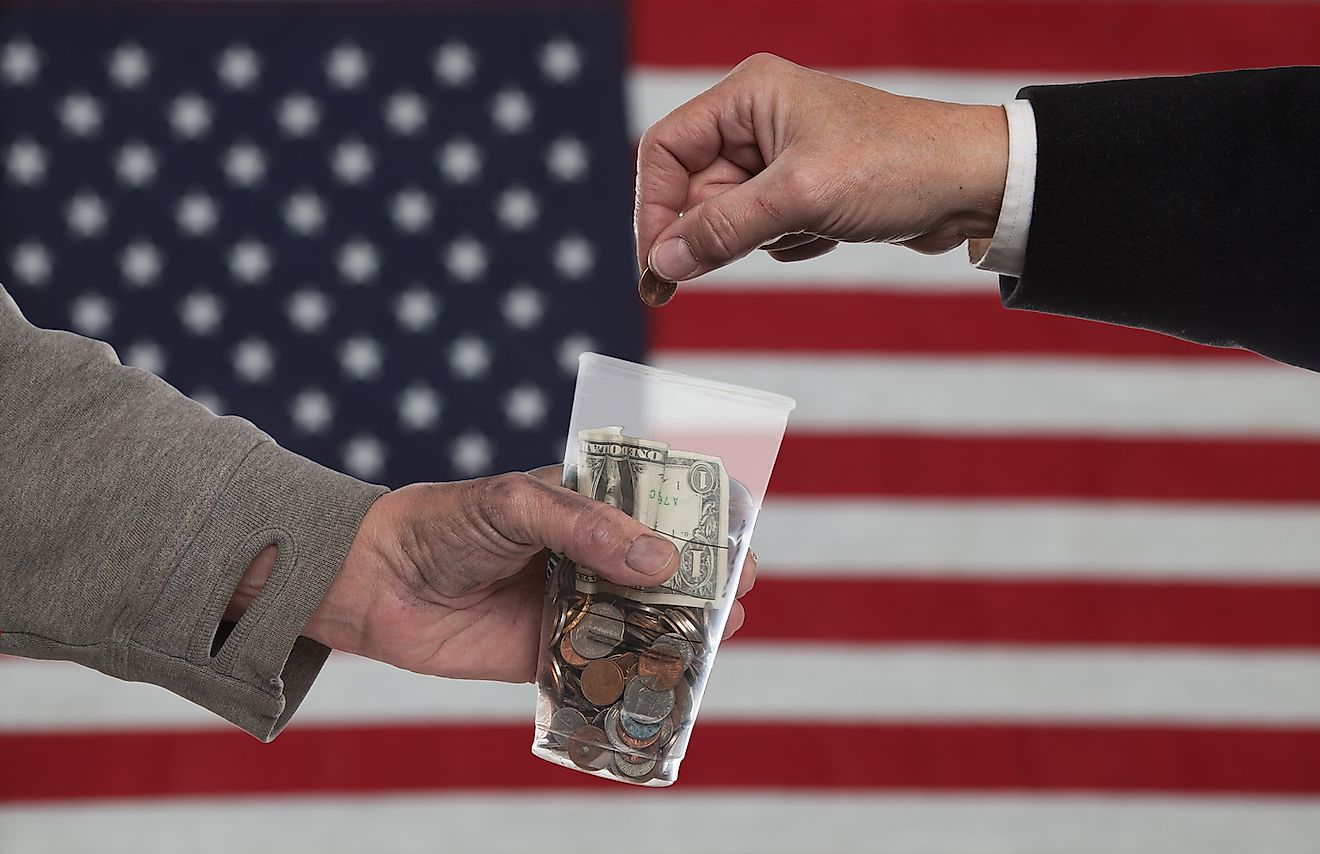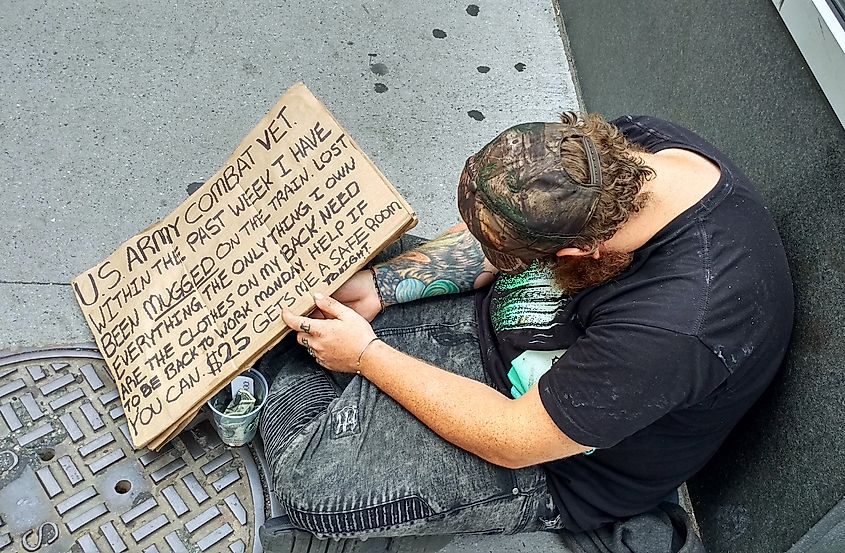How Many Americans Suffer From Poverty?

- Almost 40 million Americans were living in poverty in 2017. In that year, the official poverty rate was declared to be 12.3%.
- Not graduating high school, being a minority, and living in a single-parent home are all factors that are more closely associated with being poor.
- College graduates earn wages that are 80% than those with only a high school education in the US.
The US is renowned worldwide for being the land of opportunity, where people enjoy a high standard of living. Many people in the US do, but there is also a sizable population that regularly goes without. According to estimates from the US Census Bureau, almost 40 million Americans were living in poverty in 2017. In that year, the official poverty rate was declared to be 12.3%.
Are these results accurate? Yes and no. In reality, the number of people in poverty in the US is higher than this. This is because the official poverty measure, which was developed in the 1960s as part of Lyndon Johnson’s War on Poverty, does not include people who are homeless, military personnel who do not live with at least one adult civilian, and those who are incarcerated. It is estimated by White House statistics that there are over half a million homeless people in the US. There are also about 1.5 million incarcerated people in the country, and about 1.3 million in the US military. It is unclear how many military personnel live on their own, but a sizable portion may. Because of these facts, it is safe to say that at a minimum, there were 40.5 million people living in poverty in the US in 2017, and likely more.
When considering poverty, it is important to know how it is measured, who is in poverty, and how the country is tackling the problem.
Measuring Poverty
Poverty is a concrete reality for those living in it, and an abstract concept that can be difficult to define for those attempting to quantify it. The US government has decided that anyone living in a household that has an income below the US poverty threshold is considered to be living in poverty. In 2019 in the US, a single person earning $12,490 or less was considered to be in poverty. For two people, the poverty line was $16,910, for three people $21,330, and for 4 people $25,750. For a family of eight, it was $43,430. In Alaska and Hawaii, the poverty thresholds were slightly different.
The official poverty measure takes into consideration how much food a family may need, and creates thresholds based on family size, and the ages of those in the household. In reality however, living on $13,000 a year would be very difficult for a single person, seeing as the median rent for a one-bedroom apartment in the US was $1234.43 in 2016. There would technically be no money left for food on this budget, and actually not enough for rent, either.
People who fall under the poverty thresholds in the US are eligible for federal safety net programs like Medicaid and WIC, which provide federal grants for supplemental food, health care and other necessities.
Somewhat shockingly, according to the Census Bureau, around 18.5 million people (5.7% of all Americas) in the US reported living in deep poverty, which means their household income was less than 50% than the poverty threshold. These people accounted for 46.7% of all those officially counted in poverty.
Who Is Living In Poverty?

Virtually anyone who falls on bad circumstances can end up living in poverty. Certain groups are more vulnerable to its grips, however. When looking at single women and those living with a single mother and no father in the home, 31% are living in poverty in the US. Of those who live in a home where the head is unemployed, 33% live impoverished. About 31% of young adults who did not finish highschool are destitute, (43% for blacks), and 27.6% of minorities are living in poverty.
In addition, certain areas of the US are more prone to having people living poor than others. The states with the highest poverty rates are mainly in the South and Southwest. These include Mississippi, Louisiana, West Virginia, Kentucky, Arkansas, Alabama, and Georgia. The state with the highest rate of poverty in the country is Mississippi, with almost 21% of its people living in impoverished conditions.

How Do People End Up In Poverty
There are many routes to poverty. Many people are born poor, meaning their family was living in poverty when they started life, and some people end up there from losing a job, or incurring overwhelming healthcare bills that force them into bankruptcy. Major life events such as marriage, divorce or a sudden death in the family can also force people into poverty.
It is well documented that having less education can impact your financial future. In 2018, college graduates in the US earned weekly wages that were 80% higher than those who had only graduated highschool. A person’s health status can also affect how rich or poor they are. Poor people have higher rates of chronic diseases, as well as recorded mental health difficulties. This can be a result of the ongoing stress of being poor, and the environments people in poverty are forced to live in. Poor children are twice as likely as others to have unhealthy levels of lead in their blood, for example. The reasons people are poor are multifaceted.
How The Country Is Dealing With Poverty

The slightly-good news in all of this is the fact that poverty rates in the US were not sky rocketing as of the last time they were measured. Many people were living in poverty, but the rates of those who were poor was not statistically different from 2017 to 2018. The coronavirus pandemic may change this trend, however.
In terms of helping the poor, There are a number of government programs that aid those in poverty including Medicaid, Head Start, Low-Income Home Energy Assistance, family planning services, food stamps, and national school lunch and breakfast programs, to name a few. Unfortunately however, this is sometimes not enough. The US has the highest poverty rate among all the world’s developed countries. More could likely be done to ensure the land of opportunities has more opportunities for all.











